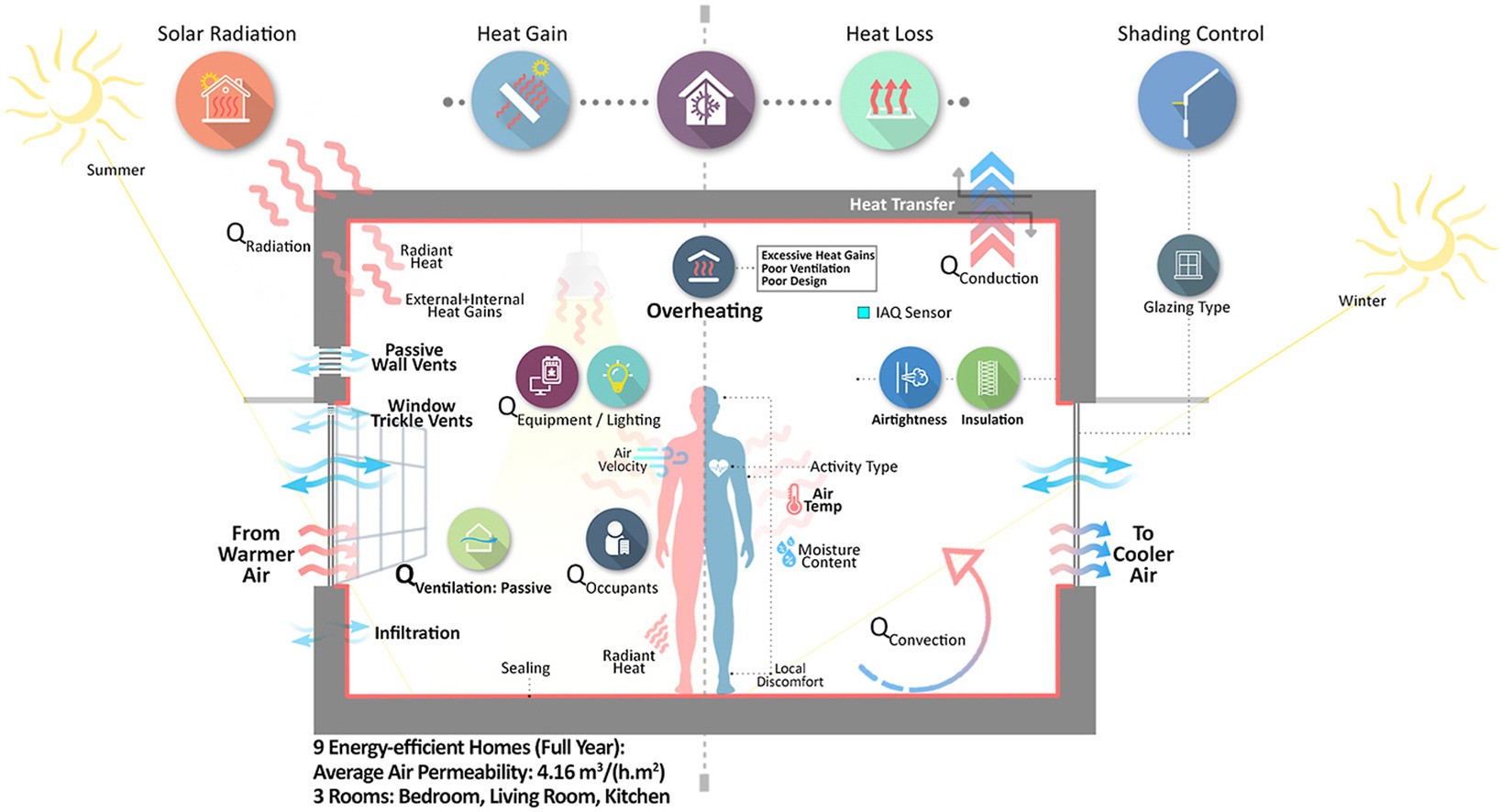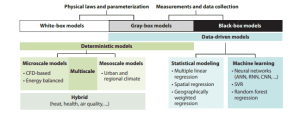Temporal assessment of overheating risk and thermal environment in naturally ventilated energy-efficient airtight dwellings

Background
As climate change results in the intensification of warm weather events, the threat of summertime overheating in buildings is raised. Enhanced building regulations drive the development of highly insulated, airtight envelopes that, if poorly designed, may be prone to overheating, especially when energy-efficiency measures do not align with effective ventilation strategies.
Aim
This study uniquely assesses overheating risk and thermal performance in energy-efficient, airtight dwellings that rely solely on purpose-provided natural ventilation; research on this topic is sparse.
Methodology
A year-long measurement campaign, for temperature and relative humidity, was conducted in nine Irish homes, allowing a seasonal analysis of thermal performance. Overheating was assessed using CIBSE TM59, alongside a thermal comfort survey.
Results
The mean heating season temperature was 20.8 °C in bedrooms, 20.5 °C in living rooms, and 20.7 °C in in kitchens, and in the non-heating season, it was 23.2 °C (bedrooms), 22.5 °C (living rooms), and 22.8 °C (kitchens). Bedroom temperatures exceeded 24 °C in the non-heating season for 12.6–54.2 % of time, and 5.0–31.8 % in living rooms, and 8.6–44.1 % in kitchens. 14 of 27 rooms failed CIBSE TM59 Criterion A for overheating, with four of nine bedrooms also failing both Criteria A and B. Overall thermal comfort was reported as higher in winter and lower in summer.
Conclusion
In summer, natural ventilation alone was insufficient to realise the potential of passive cooling in these dwellings. The prevalence of overheating underscores the need for mitigation strategies that improve thermal comfort while ensuring compliance with overheating standards.

